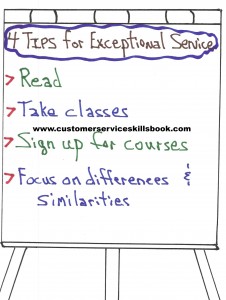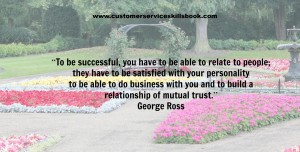The Impact of Gender Roles on Customer Service
Culturally and individually, people view the role of men and women differently. Although gender roles are continually evolving throughout the world, decision-making and authority are often clearly established as male prerogatives within many cultures, subcultures, or families. For example, in some Middle Eastern, Asian, South American, and European cultures, women have often not gained the respect or credibility in the business environment that they have achieved in many other parts of the world.
In some countries, it is not unusual for women to be expected to take a “seen and not heard” role or to remain out of business transactions. In Korea and other Pacific Rim countries, it is not typical for women to participate in many business operations. Men often still have higher social status than females. You do not have to agree with these practices, but you will need to take them into consideration when facing them as a customer service representative.
When serving customers from different countries, you would do well to remember that people leave a country, but they take their cultural norms and values with them. Failure to consider alternative ways of dealing with people in certain instances might cause you to react negatively to a situation and nonverbally communicate your bias unconsciously.
One example of what could potentially occur if you are a female customer service representative dealing with a male whose cultural background, like one of those just described, is that he may reject your assistance and ask for a male customer service provider. Another example could occur if you are a male customer service representative working with a male and female from such a culture. Do not be surprised if your conversation involves only the male. Attempts to draw the woman into a service transaction or make direct eye contact and smile with her may embarrass, offend, or even anger some male customers and/or their family members who are present.
Generally, people who have lived or worked in westernized cultures for longer periods may have acculturated and may not take offense to more direct behaviors that are meant to convey friendliness and to engage customers (e.g., smiling, engaging in small talk about families, or compliments on the dress). Even so, remain conscious of potential reactions and stay focused on verbal and nonverbal communication cues to help ensure that you do not negatively cross-cultural boundaries when interacting with customers of the opposite sex.
For additional customer service tips for interacting successfully with people and cultures that are different, get copies of Customer Service Skills for Success 6th edition and Please Every Customer: Delivering Stellar Customer Service across Cultures.










